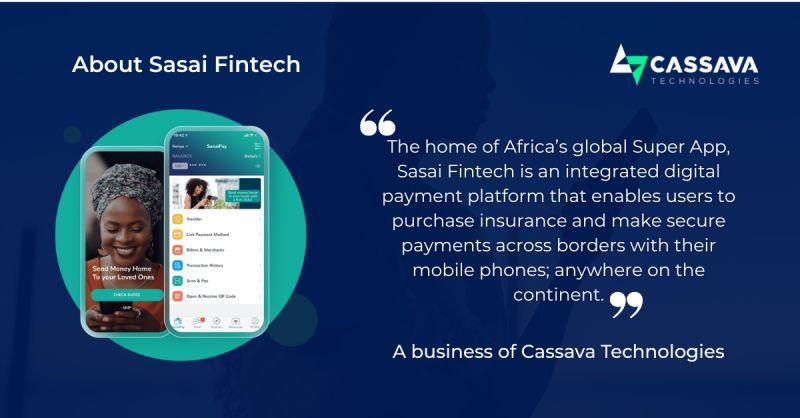
9 minute read
GET AN INSIGHT ON DIGITAL TRANSFORMATION OF 2022-2023 STRATEGIES
Introduce us to Patricia Daka your family, education background and your professional work career?
PD: Bwanji, my name is Patricia Daka. I’m an ambitious and passionate multi-hyphenate creative. I grew up in a family of 4 girls being the 2nd oldest. I’m an avid traveler, having lived across multiple continents and have a strong appreciation of different cultures.
Advertisement
I have been in the marketing industry now for almost a decade with extensive experience working across various industries, from nonprofits, creative agencies and corporates.
Throughout the span of my career, I have worn many hats from working on strategy, PR, Digital Marketing, Event management, Product development and many others.
What made you choose marketing and specifically digital marketing as your choice of study and career to pursue?
PD : I didn’t choose marketing but rather marketing chose me. When I was preparing to go to college, I wasn’t quite clear on what it was that I wanted to do, but I was clear of the fact that I didn’t want to do the same thing every single day.
My creative side, was always glaring present even though it wasn’t always acknowledged. I remember I used to get into trouble a lot with my primary school teachers for either always talking too much or doodling a lot
When I got to college, I took some classes that allowed to explore some of my creative passions from photography, design, strategy and PR little did I know that through discovering and experimenting with some of these passions, they were arming me with the most adequate in-demand skills to become a full stack marketing professional with a flair for digital.
Through some of my internships and college courses, I began to unpack and learn more about digital marketing. .
You are currently the brand strategist at Sasai Fintech a company that offers financial digital services to Africa’s mobile consumers, how has that challenged you or contributed towards your work career?

Working for a conglomerate of an organization has been quite a journey. Every role that I have been in has been impactful to where I am presently.
I have worked across various brands in various industries and with some great teams and mentors along the way who have all helped me sharpen my toolbox as a marketing executive.
Each business, each brand and teams are different and having the right skills to be able to navigate, pivot your strategy and think outside the box have been some of the few things that have allowed me to remain agile within my work.
In my current role, the experience alone, of having to navigate and curate unique strategies for the different markets that we operate in has been challenging but eyeopening in understanding what works and what doesn’t.
The hands-on experience alone has allowed to learn a couple of tips and tricks along the way.
Whatis the meaning of digital transformation, and how is it different from digital marketing?
Digital Transformation& Digital Marketingare two very different things. Digital transformation focuses on the adoption of digital technology by an organization to digitize nondigital products, services/operations.
The key objective with Digital transformation for any organization is all about value creation whether through innovation/invention; customer service experience or efficiency.
Digital Marketing on the other hand is a component of marketing that utilizes Digital technologies to promote products and services. .
Are there different types of digital transformation, just like different types of digital marketing?
Yes, there are different types of digital transformation. The 4 key areas for Digital transformation are Process Transformation, Business Model Transformation, Domain Transformation, and Cultural Transformation
Each type or rather process of Digital Transformation always comes with its own set of challenges.
We often see corporations focused solely on process or organizational transformation. Failure to address all four types leaves significant value on the table. many corporations erroneously believe digital transformation must begin with cultural/organizational transformation.
Teaching the organization to be more innovative, agile and digital is indeed important, but we see greater success among corporations that first pursue business transformation initiatives.
As an expert, what does digital transformation mean to you?
PD: Digital transformation can make or break your business. If you still want to remain relevant & competitive as the world becomes increasingly digital, you’d need to integrate
Digital Transformation as part of your business. Simply put, it’s the integration of digital technology into all areas of a business, fundamentally changing how you operate and deliver value to your customers.
Digital Transformations can be complex. Howcan we simplify the process?
PD: Regardless of their business or position, today's leaders understand that their firm must change in order to survive. The remains of companies that were once the cornerstones of their sectors are all over the corporate landscape today, having been upended by newcomers that were better able to spot trends, embrace innovation, and move more nimbly to succeed.
Key steps to simplifying your digital transformation process is by breaking down your current workflow and identifying where errors and inefficiencies occur.
How do you measure the success of a digital transformation project?/How do you measure if your digital transformation was successful?
PD: There are many ways to assess the progress and efficacy of your digital transformation efforts. You can measure the number of users relative to the number of licenses purchased. This measurement gives you a basic sense of the adoption rate of your software investment.
You can also analyze the breadth and limitations of usability; measuring exactly how your digital tools are being used will give you a clearer picture of how well your employees have adopted the tools and achieve meaningful benefits.
Also understanding your employee customer journey to better understand their navigation patterns and areas where there are bottlenecks/friction.
You can also count the number of processes performed on new software. In addition to understanding the overall level of adoption and usability, you’ll want to know how many processes are being performed on your new software.
This will give you an idea of how much value your software investment is bringing.
You can also assess your productivity indicators which is generally understood as the volume or value of outputs relative to the time and resources invested. For example, if you invested in a digital tool to support customer support, you can measure how many more support tickets your team was able to handle since implementing the new system.
Lastly, you can also measure the amount of new revenue attributed to digital investments. Similar to measuring productivity, you can measure how much your digital investments influence revenue.
For example, if you introduce automation into your customer journey, you can track how many prospects interacted with the tools and compare how many among them became paying customers.
In your own opinion, do you think local companies in Zimbabwe are fully opening to digital transformations and how do you see the future of our digital transformations?
PD: I do believe most companies in Zimbabwe are seeing the need to implement digital transformation as part of their business mandate; however, the challenge for some Zimbabwean businesses is where to start.
We have made quite significant digital advances in certain products or services within the Zimbabwean market, for example the revolution in mobile money
What is the Biggest Obstacle to Implementing Digital Technology?
PD : As a business leader, you must understand that digital transformation challenges are not always directly related to technological concerns or technical barriers

They also include people-centric issues, organizational structures, and other non-tech factors The best way to overcome them is to identify and assess which specific problems affect your business
Most organizations find themselves in a space where their biggest obstacle in implementing Digital Transformation is Employees pushing back By our very nature, as humans, we like routines they make us feel comfortable
We tend to be very comfortable in our comfort zones and anything that challenges that comfort zone becomes an issue
Things can easily start to seem grim when our routines are changed, and uncertainty enters our lives Experiencing a digital transformation is the epitome of discomfort so it may make employees feel threatened
In order to successfully implement Digital Transformation, change is a requirement. However, to curb some of these challenges of employee push back, constant communication and transparency in the steps that the organisation/business is taking will allow for constant engagement with employees in order to erase doubt and uncertainty.
What can you say is your main business secret?
PM : Definitely! We seek to grow, expand and be innovative enough to deliver remarkable real leather products to satisfy today’s customer within the boarders of Africa and beyond..
Our aim is to tap into the export market through trade fairs and trade missions and occupy a bigger share of the local market ,
What are some of the achievements that you managed to achieve in business? Any awards?
PD: I would say some of my greatest achievements have been in the highly successful marketing campaign that I have led within my current role
I have helped launch compelling, revenue-generating campaigns across various markets and the collaboration of working with other brilliant minds to achieve the set goals has also been quite exciting Within the last 2 years,

I have been awarded the Outstanding Marketing Leader of the Year – Platinum winner - 2021; Outstanding Strategic Leader of the Year – Diamond Winner –2022 and most recently I was named as 1 of the Top 20 Outstanding Women in Business by The Megafest Business Awards. It has been truly humbling being awarded and being honored for my work.
Any advice to business owners about adapting to digital transformations and those who aspire?
PD : The advice that I would give to any business owner looking to Digitally transform their business/organization would be to:
▪ Have the right, digital-savvy leaders in place
▪ Build capabilities for the workforce of the future
▪ Empower and encourage your staff to work in new ways
▪ Digitally upgrade your day-to-day tools
▪ Communicating frequently via traditional and digital methods










